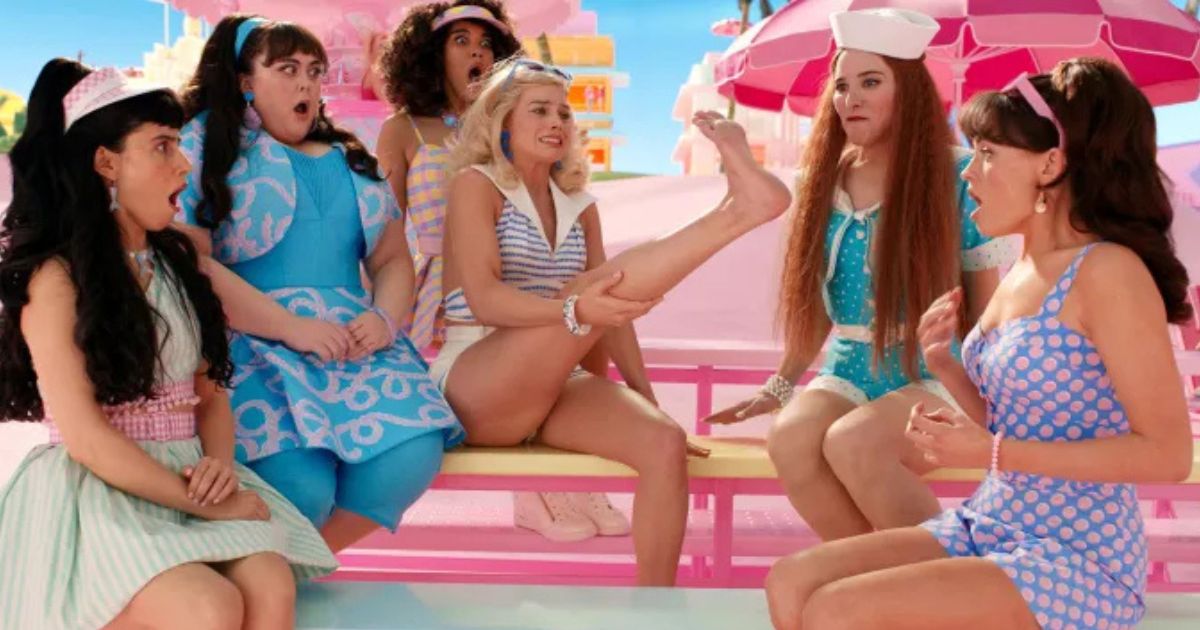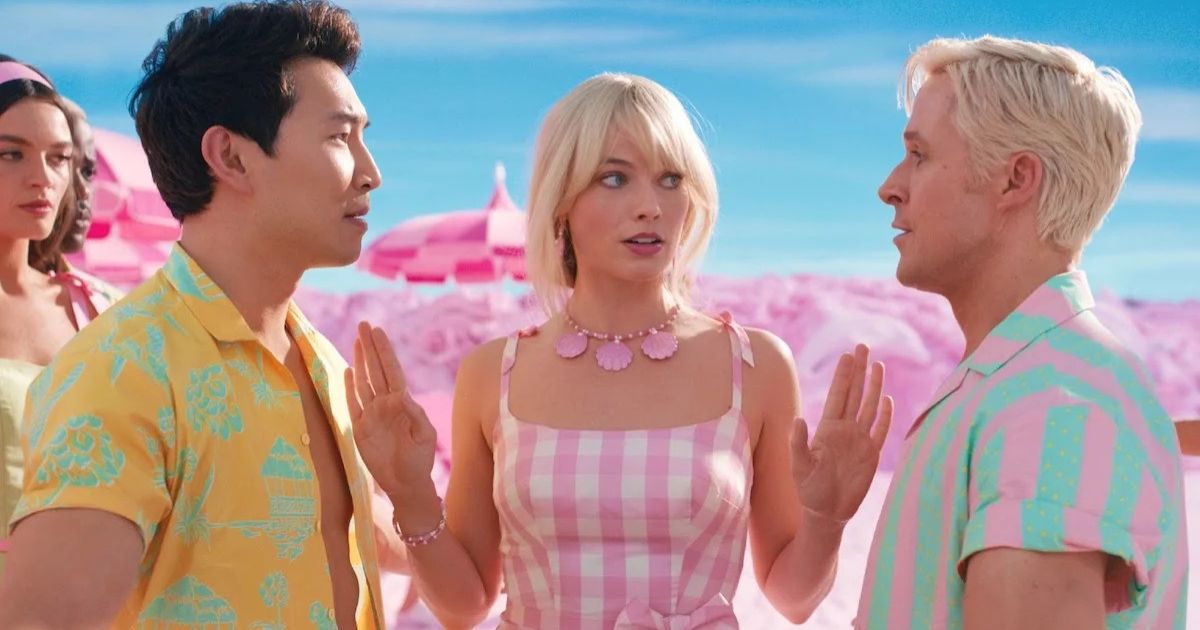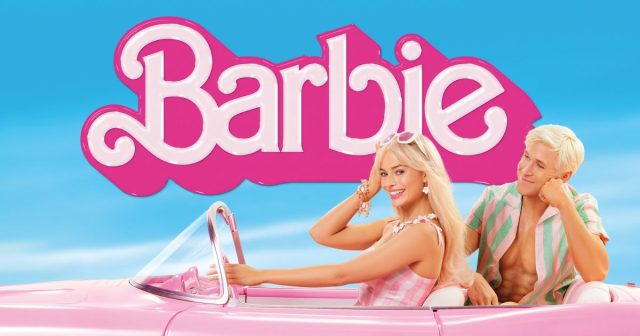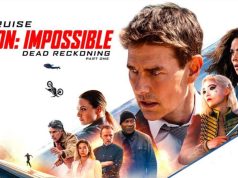Greta Gerwig’s Barbie (2023) arrived in theaters with unprecedented buzz—and for good reason. This Barbie Movie Review explores how the film balances playful nostalgia with sharp social commentary, offering both lighthearted humor and meaningful depth. Set in the vibrant world of Barbie Land, the story brings Margot Robbie’s Barbie and Ryan Gosling’s Ken on a journey that redefines an iconic toy brand through wit, creativity, and feminist themes. With its blend of colorful visuals, clever satire, and heartfelt performances, Barbie emerges as more than just a comedy—it becomes a cultural conversation piece that resonates far beyond the pink dreamhouse.
Plot Overview
The movie opens in Barbie Land, an idyllic utopia where every inhabitant is a Barbie or Ken archetype living carefree lives. Margot Robbie’s Barbie begins to notice cracks in this perfect facade when she experiences inexplicable thoughts about aging and mortality—an existential crisis unheard of in her world. Determined to find answers, she crosses the mirror boundary into our world, dragging Ken (Ryan Gosling) along with her.
In the real world, Barbie grapples with everyday struggles, including desk jobs, social media pressures, and the weight of centuries of cultural baggage. Meanwhile, Ken discovers the toxic elements of patriarchy and decides to embrace his own version of power. Their parallel arcs intertwine as Barbie seeks her true identity and Ken learns the actual cost of dominance.
Direction and Screenplay

Greta Gerwig’s direction is both ambitious and precise. She balances whimsical set-pieces—complete with vibrant pink palettes and larger-than-life props—with sharp comedic timing and deeper thematic beats. The screenplay, co-written by Noah Baumbach, cleverly deconstructs the Barbie mythos while delivering laugh-out-loud moments. Scenes in Barbie Land feel like a surreal satire, yet the film never feels mean-spirited: it honors what made Barbie beloved while exposing its underlying contradictions.
Gerwig’s greatest triumph is her ability to shift tone seamlessly. One minute, we’re reveling in a perfectly choreographed dance number; the next, we’re immersed in a poignant confrontation about gender roles. The narrative never loses momentum, and every scene serves multiple purposes: entertaining the audience, advancing character growth, and reinforcing central themes.
Performances and Characters

Margot Robbie brings depth to Barbie with a performance that oscillates between wide-eyed innocence and heartbreaking sincerity. She captures Barbie’s inherent optimism but also reveals her vulnerabilities, making her journey genuinely affecting. Ryan Gosling, as Ken, delivers the film’s most hilarious moments—his swaggering confidence and over-the-top one-liners are instantly meme-worthy, yet Gerwig ensures he’s more than comic relief by charting his own transformative arc.
Supporting turns are equally strong. America Ferrera plays a grounded counterpart to Barbie, offering warmth and humor as she navigates a world hostile to perfection. Simu Liu’s Ken 2.0 provides both laughs and commentary on performative masculinity. Will Ferrell and Kate McKinnon, in more minor roles, inject perfect doses of absurdity without distracting from the film’s emotional core.
Visuals, Production Design, and Soundtrack
The production design earns its own applause. Barbie Land is an extravagant confection of pastel hues, life-size dollhouses, and meticulously crafted sets that feel both toy-like and grandiose. Costume designer Jacqueline Durran outfits the cast in an array of iconic Barbie fashions, from 1950s gowns to futuristic ensembles, each piece a loving nod to Barbie’s evolution.
The cinematography by Rodrigo Prieto contrasts the artificial perfection of Barbie Land with the grittier, more chaotic real world. In Barbie Land, the camera moves with choreographed precision; in our world, handheld shots and natural light convey authenticity. Alexandre Desplat’s score blends playful motifs with emotionally resonant themes, while a curated pop soundtrack (including original songs) keeps the energy high and the tone buoyant.
Themes and Cultural Impact
At its heart, “Barbie” examines identity, empowerment, and the complexities of modern womanhood. The film tackles feminism head-on, questioning whether a world without men is truly liberating and highlighting the dangers of both matriarchal and patriarchal extremes. It also confronts ageism and the unrealistic standards imposed on women, offering a call to embrace imperfection and authenticity.
Since its release, the movie has sparked widespread conversations about representation in Hollywood, the legacy of Barbie as both a toy and a cultural symbol, and the role of female filmmakers in reshaping mainstream narratives. Social media has lit up with think pieces dissecting its subtext, while younger audiences admire its colorful spectacle—and both responses speak to its multifaceted appeal.
Final Verdict
Gerwig’s “Barbie” transcends expectations. It’s more than a nostalgic romp; it’s an innovative, heartfelt exploration of identity and empowerment wrapped in contagious joy. With standout performances, dazzling visuals, and a sharp screenplay, the film cements itself as one of the year’s most memorable releases. Whether you’re a lifelong Barbie fan or new to the Dreamhouse, this movie delivers a perfectly balanced blend of fun and depth. 5 out of 5 stars.
Ready to dive into Barbie’s world? Grab your friends, don your prettiest pink, and prepare for a cinematic experience that’s as thoughtful as it is delightful.
For Further Reading, Explore Oppenheimer Movie Review: Nolan Mastery Unveiled









